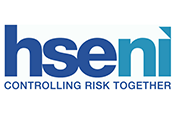Safe manual handling at work
Assess the risks of manual handling
Guide
You must assess the risks that staff face when manual handling as part of your overall health and safety risk assessment. This includes lifting, lowering, carrying, pushing or pulling.
Five steps to assessing risks
Carry out these steps to assess the risks of manual handling:
- Identify hazards in your workplace. Consult staff about the hazards they face and ask how you can reduce the risk of them occurring.
- Work out who might be at risk of harm, and how. Consider which staff might be particularly vulnerable. For example, do young, disabled or pregnant employees ever need to lift or carry as part of their job? Remember to consider the risks to visitors to your workplace, such as cleaners and contractors.
- Evaluate the risks and decide whether current safety measures are enough. Draw up an action list with priorities at the top.
- Record your findings. If you employ five or more people, you must write down your findings and inform staff of them.
-
Review your assessment and revise it if necessary. For example, when new equipment or processes are being introduced or new members of staff join the company.
You must reduce manual-handling risks to the lowest level that is 'reasonably practicable'. This involves weighing a risk against the trouble, time and money needed to control that risk.
The Health and Safety Executive provide guidance on manual handling and a manual handling assessment chart tool.
You should also consider the risks of staff slipping or tripping when lifting or carrying loads. See avoid slips and trips in the workplace.
- HSENI Helpline0800 032 0121
Actions
Also on this site
Developed with:
